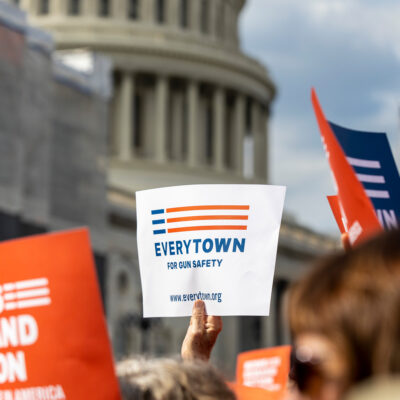Red Flag Laws Save Lives. Here’s Proof.
3.26.2019
As the Senate Judiciary prepares to hold a committee hearing on Red Flag laws today, it’s important to understand the life-saving effects these laws have in removing firearms from dangerous situations. Since the Parkland mass shooting – where the family of the shooter saw warning signs prior to the shooting – nine states have passed Red Flag laws and five were signed by Republican governors. In total, fourteen states and Washington D.C. have these laws on the books.
Red Flag laws allow families and law enforcement to ask a judge to temporarily suspend a person’s access to guns if there are clear signs that person poses a serious threat to themselves or others. When someone is in a state of crisis, or threatening violence against themselves or other people, access to a firearm can mean the difference between life and death. The below stories are just a small sampling that provide important illustrations of the vital role of Red Flag laws in preventing people in crisis from accessing firearms:
In Campbell, California, a woman contacted the Campbell Police Department after her husband sent her a threatening text referencing a recent sniper attack in Dallas, then loaded his guns into his car and departed. After an order was issued, police removed seven weapons, including a scoped rifle, from the man’s place of work.
In Escambia County, Florida, a high school student was stalking his ex-girlfriend after she broke up with him. At one point he attempted to punch a boy who was with her. The student also threatened to post naked photos of the girl on social media, said he would kill himself if she didn’t get back together with him, and posted photos of an AR-15 online. Two resource officers submitted affidavits for a petition against him and all the firearms were removed from his home.
In Randolph, Massachusetts, a woman filed an extreme risk protection order against a Marine Corps veteran who she says had assaulted her and had a “pattern of self-harm, violence towards others and objects.” Handguns and ten semi-automatic rifles were removed by police.
In Roseville, Califonia, the Roseville Police Department responded to a relative’s call about a man armed with a handgun and threatening suicide inside his home. When the officers could not convince him to come out of the house after several hours, they returned later with a gun violence restraining order and removed his firearms.
In Osceola County, Florida, a janitor threatened to bring a gun to school, and was reported to police by a teacher at Parkway Middle School. He told the teacher his only regret would be that his targets would “run for their lives before [he] could get to them.” After an order was issued, deputies removed a handgun from the man.
These laws are proven effective. In Connecticut, the increased enforcement of its Red Flag law was associated with a 14 percent reduction in the state’s firearm suicide rate. Ten years after passing a Red Flag law in Indiana, the state’s firearm suicide rate decreased by 7.5 percent.
After today’s hearing, the Senate should pass Red Flag legislation into law. More information about Red Flag laws is available here. If you have additional questions about this bipartisan policy, don’t hesitate to reach out.
###




